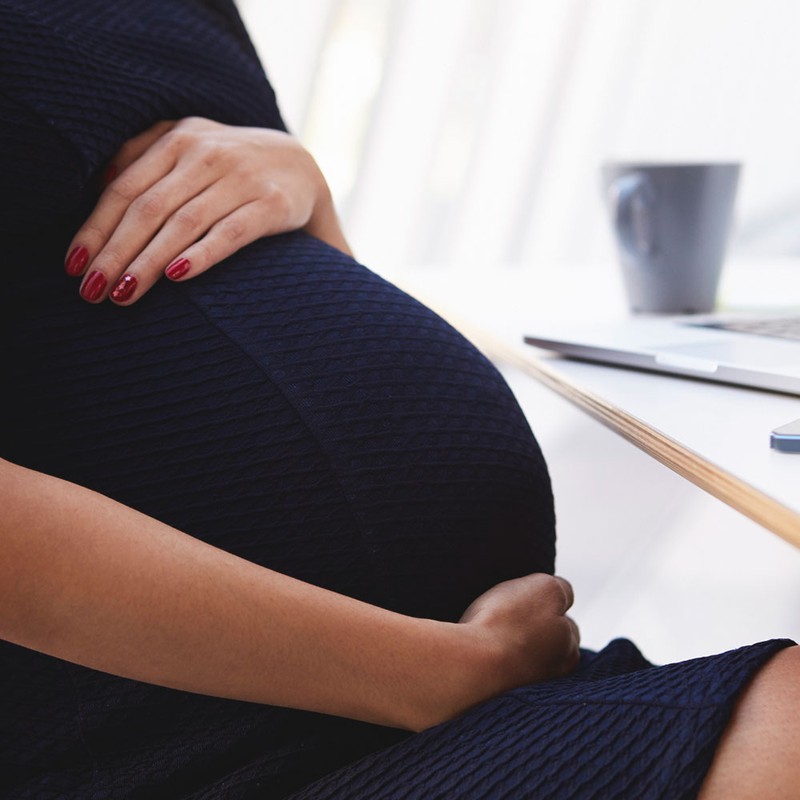
Going On Maternity Leave: What You Need To Know
Telling your boss you’re pregnant is something lots of people dread – when do you need to do this?
Legally speaking, you don’t have to tell your boss you’re pregnant until 15 weeks before your due date. But when the time comes, it’s crucial to be clear that you want to take maternity leave and when you might expect it to start and end. It’s also best to follow up in writing so you have a record of the conversation and any terms discussed. Also, don’t be alarmed if they ask for proof of your pregnancy – this is normal. Medical certificates, such as your MATB1 form, should be given to you at an antenatal appointment with your midwife after your 20-week scan, and this is what makes you eligible for paid maternity leave.
Is everyone eligible for paid maternity leave?
It doesn’t matter how long you’ve worked for your employer, how much you’re paid or how many hours a week you work – you have the right to take up to a year of maternity leave. All that does matter is you’re an employee doing regular work with set, fixed hours. If you’re a ‘worker’ – i.e. you work for an agency, are a casual worker or are on a ‘zero-hours’ contract – then you won’t be eligible for paid maternity leave. If you don’t want to be off for a year, the shortest maternity leave you can take is two weeks.
What are the rules on going to appointments during the working day?
You are allowed to have paid time off for your antenatal appointments. And that also includes the time spent travelling to and from appointments. Official appointments include scans, pregnancy health checks and relaxation appointments. Dads or partners are also able to attend up to two antenatal appointments, but these are typically unpaid. That said, some employers are able to offer dads and partners more paid time off to attend appointments, so it’s certainly worth checking their employment contracts.
And what about anti-natal classes?
You can take paid time off to attend antenatal or parenting classes if they have been recommended by a doctor, nurse or midwife. However, you may find you need a letter from your medical team to support this before your employer agrees to it.
What happens if you’re signed off work with pregnancy-related illness?
If you are unwell and have to take sick leave with a pregnancy-related illness in the last four weeks before your baby is due, your maternity leave will start automatically from that date. So yes, that time off will count towards your maternity leave. Simple morning sickness outside of this time will not count towards your maternity leave. It is important to note that sickness and nausea during pregnancy can happen at any time of the day, so try not to suffer in silence. Speak to your employer about how you are feeling and work towards a plan that works for everyone. This could include making arrangements to work at home if possible, or changing your working hours.
Who is responsible for recruiting maternity cover?
Every organisation handles this differently. But it’s advisable that women get involved in shaping the process where possible, and offer some practical solutions, as this will help with a smooth handover. It also gives whoever is covering you a good amount of time to spend with you, so that they can ask lots of questions before you go on maternity leave.
Is it possible to save your holiday and delay the start of your maternity leave?
Your organisation may dictate how they prefer holiday to be used in this instance, but many mums-to-be will try to save as much annual leave as they can and use it just before their official maternity leave starts to maximise the length of time they get fully paid for.
And can you accrue holiday when you’re on maternity leave?
Your annual leave will accrue while you’re on maternity leave. Speak with your employer about how you would like to make use of the time accrued before you go on maternity leave and come to an agreement on how the time will be used. Some women like to use the extra days to return back to work part-time, while others add it on to the end of their maternity leave for more paid time off.
How is maternity leave affected if the baby arrives early?
If your baby comes earlier than expected, your maternity leave will start the day after your baby is born. Don’t forget to notify your employer of the date of arrival if your baby comes early. If you are experiencing complications in your pregnancy and it is impacting your ability to work, ask your doctor or midwife to document the details and state if you are not fit to work. Sadly, one in four women will experience pregnancy loss – the loss of a pregnancy before 24 weeks is classed a miscarriage. In the tragic event of a miscarriage, you will not qualify for maternity leave or maternity pay. Do talk to your employer about taking time off, however, as you may be able to take compassionate or sick leave. If not, then do consider unpaid leave as an alternative option. The Miscarriage Association has an incredibly helpful set of resources to help anyone who is suffering a miscarriage at work. If you sadly suffer a stillbirth after the 24th week of your pregnancy, then you will still be able to take maternity leave and receive maternity pay if you meet all the qualifying criteria. Maternity leave will start the day after the stillbirth.
When do you need to agree a return date?
In the UK you are able to take 52 weeks of maternity leave. So, if you plan to take the full year off, your maternity leave will automatically end on the one-year anniversary of your maternity leave. You will need to let your employer know if you plan to be off for a different length of time at least eight weeks before you hope to return. Try to discuss your expected return date before you go on maternity leave, making it clear that this is a provisional date and you will be able to confirm at a later date. This date may change along the way and you may feel you need to extend or shorten your maternity leave. In which case, you need to tell your employer when you would like to return to work at least eight weeks beforehand.
How do ‘keep in touch’ days work?
‘Keep in touch days’ are days you can use to work while on maternity leave. You can do up to ten of them at your full rate of pay, too. However, your employer doesn’t have to offer them and you do not have to use them. If you would like to do them, it must be agreed beforehand with your employer. The idea behind is to allow you to be kept informed and up to date on developments within your organisation. Some examples of this may be attending an industry conference, team training, client meetings or covering for another member of staff. This will help enormously with the transition back to work in terms of keeping up to speed with major changes in the office and boosting your confidence. It’s also very possible that most of this can be done virtually now, which will make it easier to fit around you and your baby’s schedule.
Finally, is there anything else people should know?
Bear in mind that if you have taken more than six months of maternity leave you may not be able to return back to exactly the same role – especially if your previous role no longer exists due to significant changes in the organisation. However, you have the right to a similar job when you return. This means that the new role offered has to be on the same or better terms and conditions. Despite the current disruption in the job market, it is against the law for an employer to make you redundant because you are pregnant or are on maternity leave. If there is a redundancy process happening at your organisation, always ensure a fair process is being followed and seek further guidance, the ACAS guide is a good place to start.
My Bump Pay is a community-based platform helping women to find confidence and achieve career success before, during and after pregnancy through helpful online resources.
Visit MyBumpPay.com
DISCLAIMER: We endeavour to always credit the correct original source of every image we use. If you think a credit may be incorrect, please contact us at info@sheerluxe.com.




/https%3A%2F%2Fsw18.sheerluxe.com%2Fsites%2Fsheerluxe%2Ffiles%2Fwebsite-images%2F2025%2F04%2Fnew-parenting-background-image.jpg?itok=rRrLkJpg)